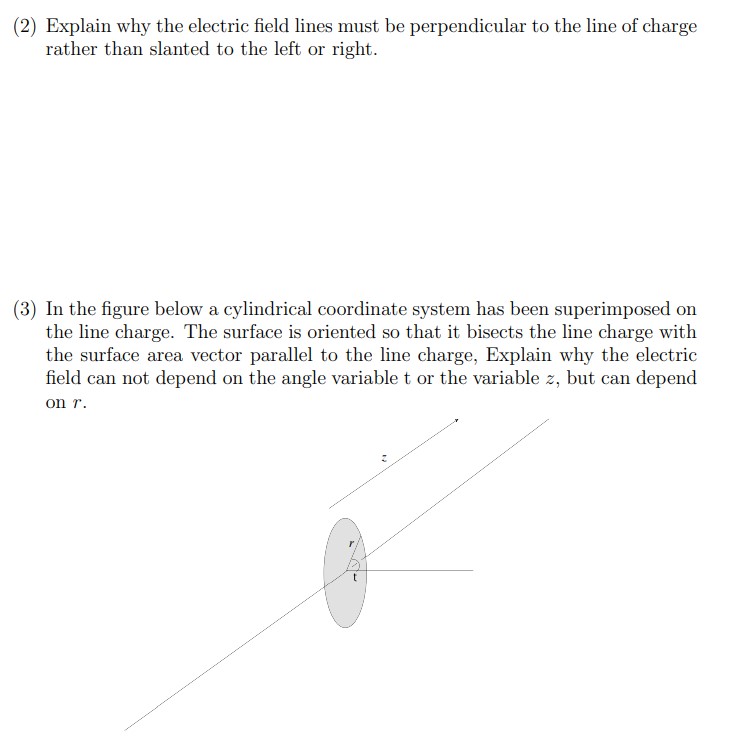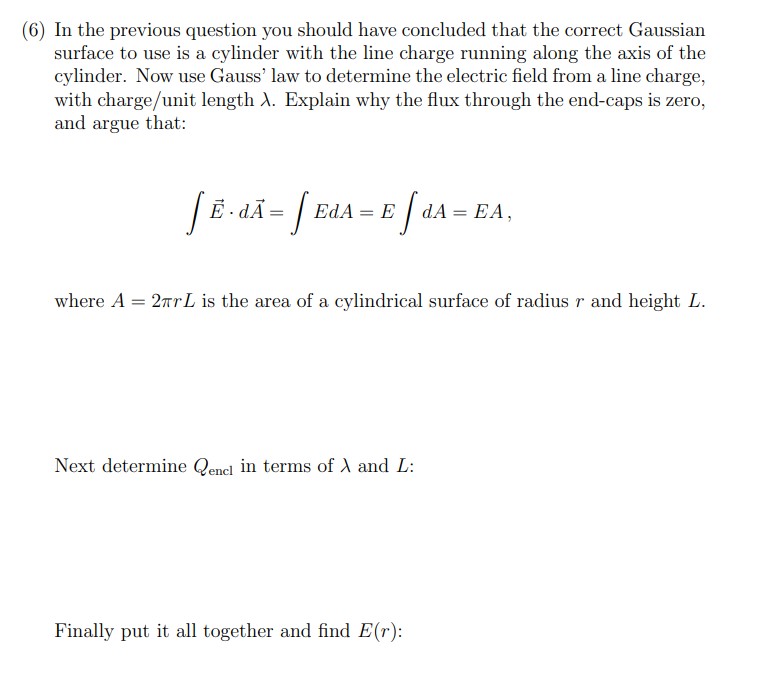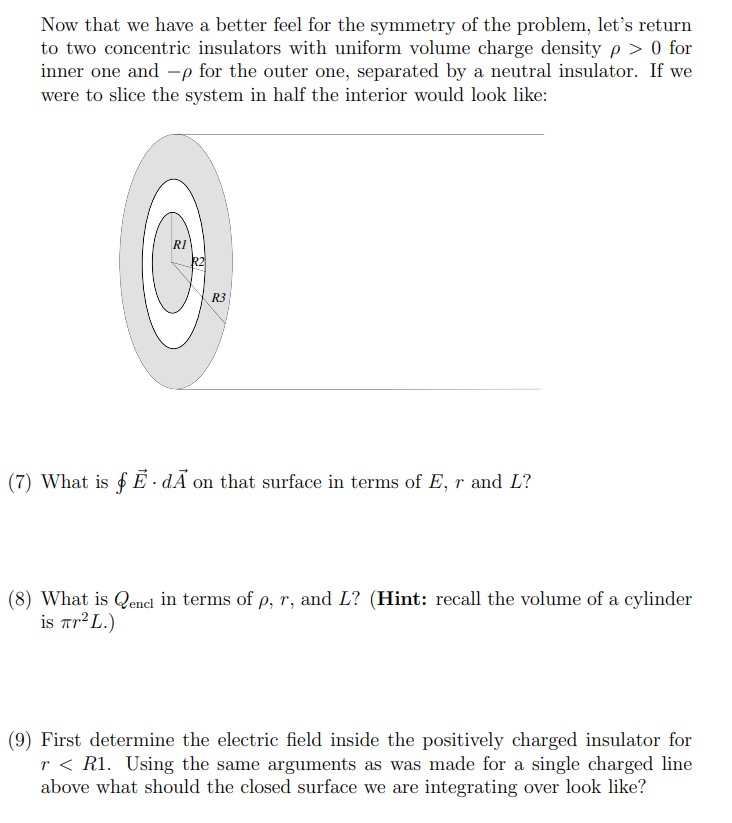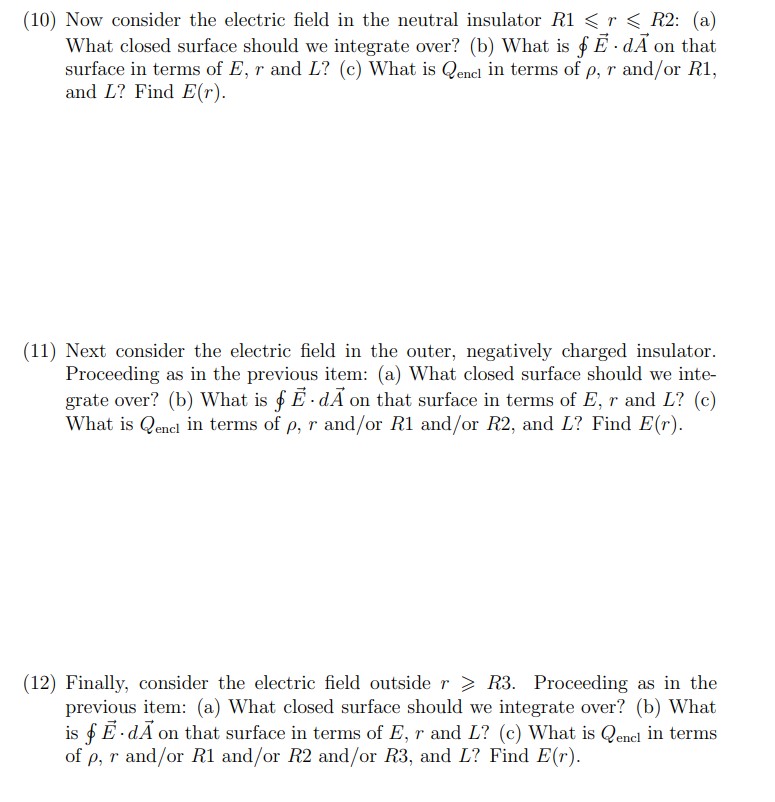Answered step by step
Verified Expert Solution
Question
1 Approved Answer
Today we are going to calculate the electric field of two concentric non-conducting charged cylinders (separated by a neutral insulator) of infinite length in







Today we are going to calculate the electric field of two concentric non-conducting charged cylinders (separated by a neutral insulator) of infinite length in all regions of space. We will be using Gauss' Law to do so, and as usual we need to understand the symmetries of the physical set up to set up Gauss' Law correctly. Recall Gauss' Law is d= Qencl 0 where the integral is over any closed surface. (1) Before we consider the entire problem we will consider a simpler problem to shed some light on the symmetries of the physical set up. So consider an infinitely long line of charge represented by the long line in the figure (the dashes indicate the line goes to infinity). Draw the electric field lines at each of the labeled points in the figure. A B E (2) Explain why the electric field lines must be perpendicular to the line of charge rather than slanted to the left or right. (3) In the figure below a cylindrical coordinate system has been superimposed on the line charge. The surface is oriented so that it bisects the line charge with the surface area vector parallel to the line charge, Explain why the electric field can not depend on the angle variable t or the variable z, but can depend on r. (4) Based upon these considerations if we want to use Gauss' law to determine the electric field due to this infinite line charge what kind of closed surface should we choose, and why? (5) For a moment consider a finite line charge. Why would it be impossible to use Gauss' law to determine the electric field for a finite line charge? (Hint: consider what the electric field does near the ends of the charge distribution.) (6) In the previous question you should have concluded that the correct Gaussian surface to use is a cylinder with the line charge running along the axis of the cylinder. Now use Gauss' law to determine the electric field from a line charge, with charge/unit length X. Explain why the flux through the end-caps is zero, and argue that: [E-d= [EdA = E dA = EA, where A = 2r L is the area of a cylindrical surface of radius r and height L. Next determine Qencl in terms of X and L: Finally put it all together and find E(r): Now that we have a better feel for the symmetry of the problem, let's return to two concentric insulators with uniform volume charge density p > 0 for inner one and -p for the outer one, separated by a neutral insulator. If we were to slice the system in half the interior would look like: RI R3 (7) What is f d on that surface in terms of E, r and L? (8) What is Qenc in terms of p, r, and L? (Hint: recall the volume of a cylinder is r L.) (9) First determine the electric field inside the positively charged insulator for r < R1. Using the same arguments as was made for a single charged line above what should the closed surface we are integrating over look like? (10) Now consider the electric field in the neutral insulator R1 < r < R2: (a) What closed surface should we integrate over? (b) What is f. d on that surface in terms of E, r and L? (c) What is Qencl in terms of p, r and/or R1, and L? Find E(r). (11) Next consider the electric field in the outer, negatively charged insulator. Proceeding as in the previous item: (a) What closed surface should we inte- grate over? (b) What is f-d on that surface in terms of E, r and L? (c) What is Qencl in terms of p, r and/or R1 and/or R2, and L? Find E(r). (12) Finally, consider the electric field outsider > R3. Proceeding as in the previous item: (a) What closed surface should we integrate over? (b) What is f. d on that surface in terms of E, r and L? (c) What is Qencl in terms of p, r and/or R1 and/or R2 and/or R3, and L? Find E(r).
Step by Step Solution
There are 3 Steps involved in it
Step: 1

Get Instant Access to Expert-Tailored Solutions
See step-by-step solutions with expert insights and AI powered tools for academic success
Step: 2

Step: 3

Ace Your Homework with AI
Get the answers you need in no time with our AI-driven, step-by-step assistance
Get Started


